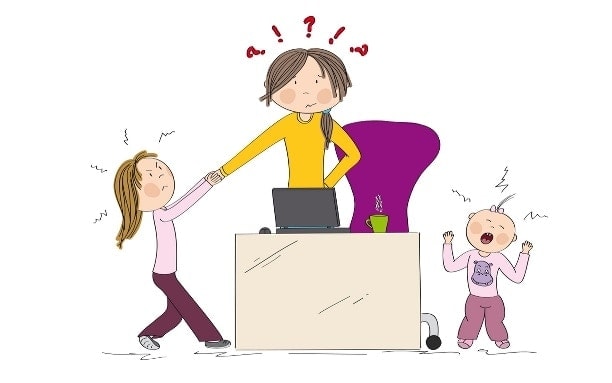What are tantrums and meltdowns?
Meltdowns are involuntary behavioural responses experienced by the child when he or she feels anxious or overwhelmed in a stressful situation. During a meltdown, a child is often unconscious of what he or she is doing. On the other hand, tantrums are purposeful, with the child being fully aware of what he or she is doing to achieve what he or she wants. Regardless of whether one is throwing a tantrum or having a meltdown, it is often our children’s way of communicating with us that they lack the skills to cope with their present situation and they need us.

Common tantrum and meltdown triggers
 What to do during a tantrum or a meltdown?
What to do during a tantrum or a meltdown?
Managing a tantrum1 can be difficult. Here are some ways that might help:
Consequences
Let your child know that acting inappropriately does not lead to getting what he or she wants.
No discussions, no bargains and no promises
When your child starts to bargain for toys on the way home, remind him or her about the rules. For example, “Do you remember? We are going to take a bus now to go to the coffee-shop, buy dinner and go home.” Make the conversation as short and as firm as possible.
Explain the connection between behavior and consequence
For example, “No TV for the both of you for 10 minutes because you fought with each other”. In this case, the consequence for fighting between the siblings is to have their TV viewing time reduced by 10 minutes.
Making consequences immediate
This is to ensure that the child learns that his/her behaviour (cause) will result in consequences (effect) . Avoid saying “You will not be able to go to the playground tomorrow,” as this would allow them to get away and not learn.
Ignore the negative behavior, if it does not pose any safety risk.
Ways to manage meltdowns1
Don’t reason with your child. During a meltdown, a child’s brain is temporarily shut down. He or she is unable to process what you are saying.
Ensure safety. If your child engages in self-injurious behavior such as banging of the head or biting himself or herself, prevent further harm without touching them. Get a soft item such as a pillow or a cushion and place it between their head and the wall or whatever they are hitting themselves with. Stay out of their view and say nothing at this time.
Speak calmly. Use short assuring phrases such as “it is okay, Bob,” or “I am here, Bob.” Saying their name often helps to keep them in the present.
Check what calming strategies work best for them. Do they like taking deep breaths or do they find drawing or reading more calming? Practise the calming strategies with your child when he or she is calm so that he or she knows how to engage in them during a meltdown.
Teach skills to deal with triggers. Teach them to ask for help, watch out for others, negotiate how much to do, alter a challenging task and learn to accept no as an answer.
Physical movement such as tight squeezes, sitting and bouncing on an exercise ball, jumping up and down on a trampoline can help to regulate senses and calm a meltdown. Do consult your child’s occupational therapist or paediatrician on which physical movement is suitable for your child.
Some preventive measures2
Familiarise your child with the new setting (e.g. dentist or doctor’s clinic) in advance and in a gradual manner (e.g. show some pictures of the place first, and bring the child near to the place after). Avoid using tangible objects such as food to encourage positive behavior as subtle changes in the taste between different brands of food could lead to a negative reaction from the child.
Create an atmosphere in which the child feels competent. Set up activities which can allow them to succeed and praise them to help build a sense of competence and trust in you (e.g. involve them in daily household chores such as setting the table, cleaning up and praising them for their effort after).
Choose your battles. Some children might not have the skills to cope with the tasks given to them. In those cases, we should teach the skills first before letting them attempt the tasks.
Maintain your cool. Flaring up will only make things worse. Instead of requesting or making pleas for the child to stop the behavior, use a calm, firm and steady approach towards the situation.
Use visual supports (pictures/written words) to increase the understanding of instructions. These can include posters or cue cards.
Modify sensory stimulation to prevent sensory overload. If you child is triggered by loud noises, bright lights or strong smells, reducing their exposure to them can prevent a meltdown. Do consult the child’s occupational therapist for more strategies.
Use distractions to avoid the escalation of angry, out-of-control emotions. For children aged four and below, distractions can include stuffed animals, books, favourite toys, looking out of the window and hugs. For older children, things like card games, word games, magazines, discussions about favourite activities/special interests can serve as distractions. Sensory objects which have a calming effect such as the child’s favourite music, book or stuffed animal can be used. However, this can only be done when the child is not in the middle of a meltdown as he or she will not be able to process any information.
At the end of the day, we have to be mindful that when a child throws a tantrum or experiences meltdowns, it is a signal to us that their needs are unmet. Let us look at the issue with compassion and together, help our child overcome them.
Sources:
1Lipsky, D. 2011: From Anxiety to Meltdown. London: Jessica Kingsley Publishers,
2Baker, J. 2008: No More Meltdowns. USA: Future Horizons





